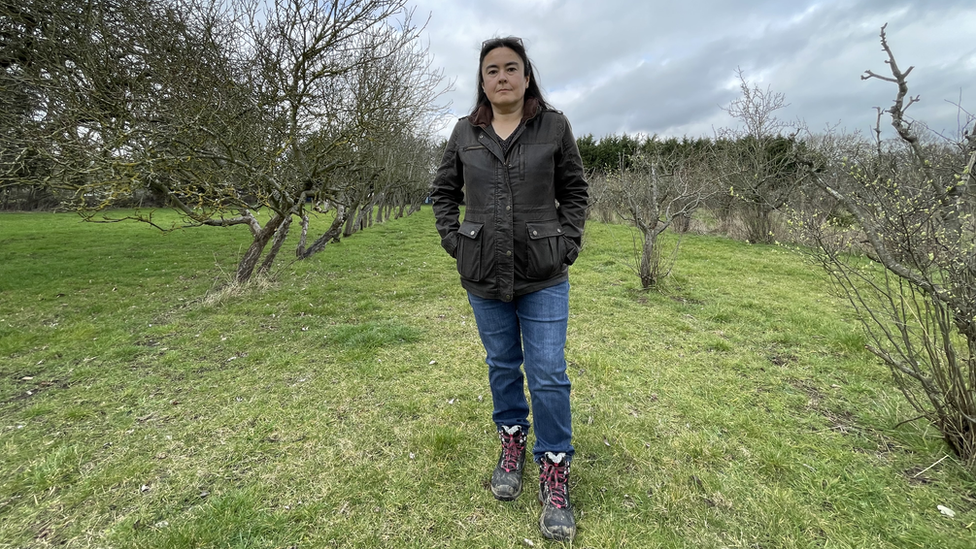Rare moth flies into orchard busway row

A rare dark crimson underwing moth was trapped in a Cambridge orchard which could lose trees to make way for a bus route
- Published
The discovery of a rare moth is "one more reason" to preserve an orchard which could lose trees to make way for a bus route, a naturalist said.
Ben Greig said the dark crimson underwing, external had recently been trapped at Coton Orchard in Cambridge and was a "fantastic find".
The government's transport secretary has yet to decide whether a busway connecting Cambridge to nearby Cambourne should cut through the orchard - and a planning inquiry could be staged.
Cambridgeshire County Council approved the C2C Busway plan in 2023.
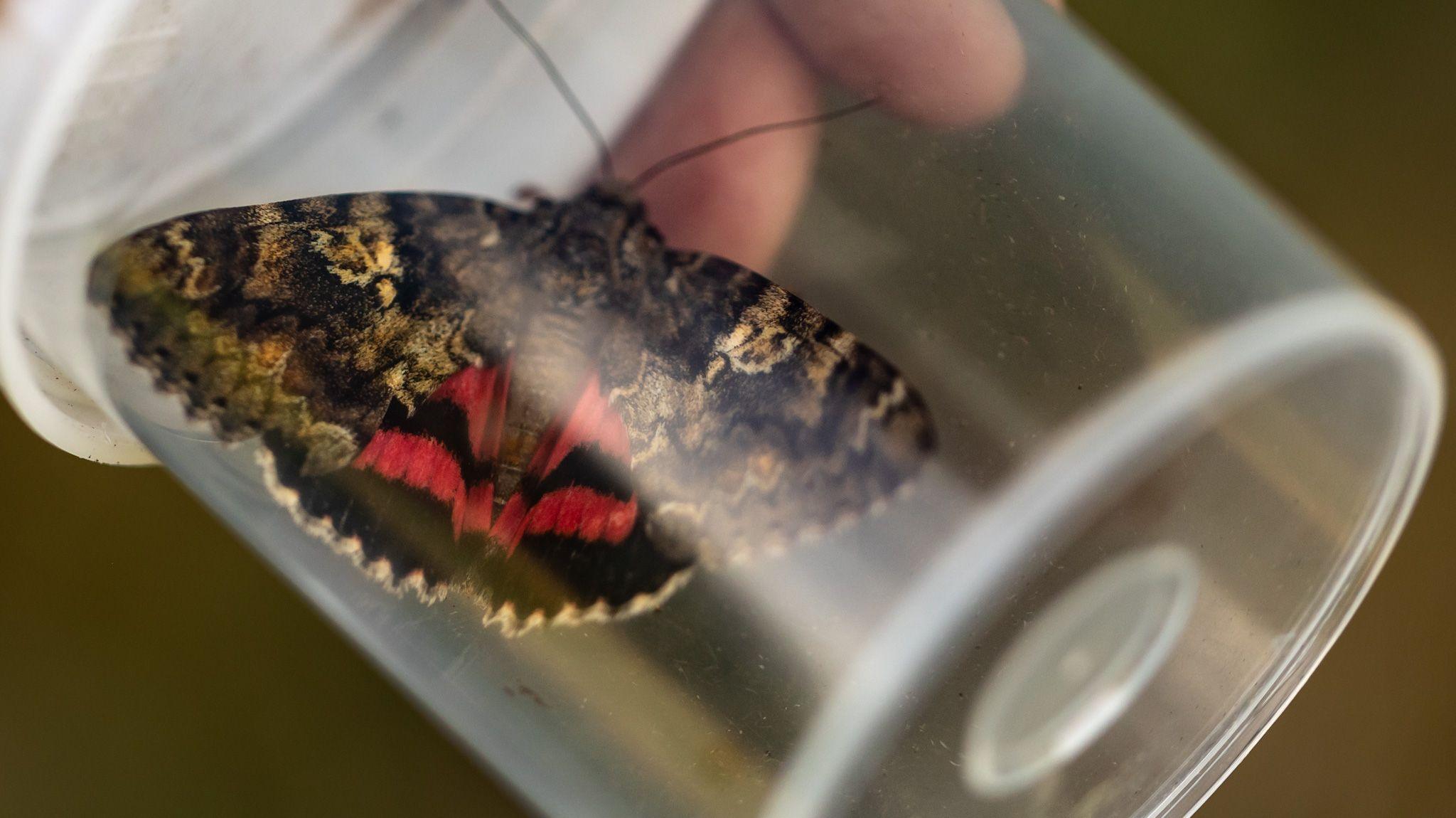
The moth was trapped and released during a recent monitoring exercise
The busway, external - devised by the Greater Cambridge Partnership (GCP) - aims to take cars off the road, make buses more reliable and cut journey times.
A spokesman for the GCP, an organisation made up of councils in Cambridgeshire, said new habitats would be created.
"We recognise the importance of Coton Orchard to wildlife and that is why we are committed to mitigating against adverse ecological impacts as far as we possibly can," he said.
"While approximately 500 trees – mostly young trees on dwarf rootstock – would need to be removed, it would impact less than 20% of the remaining active orchard.
“We plan to create new habitats at the orchard – through new trees, hedges and grassland – and we will plant 1,500 new trees across the route as part of our commitment to deliver a minimum 10% biodiversity net gain, with an ambition of achieving 20%."
He added that the Cambourne-Cambridge project had been subject to "extensive technical work, multiple public consultations and an independent audit" and the final decision rested with central government.
'Caught and released'
Mr Greig, a member of the Cambsmoths conservation group, argued there were many reasons for not cutting through the orchard.
He said birds - including bullfinches - bats and other creatures would lose habitats.
But he said the discovery of the dark crimson underwing, which was caught and released during a routine monitoring exercise, added weight to arguments against the busway.
"It was a fantastic find; it is nationally rare; it would be one more reason not to allow the busway to go ahead," he said.
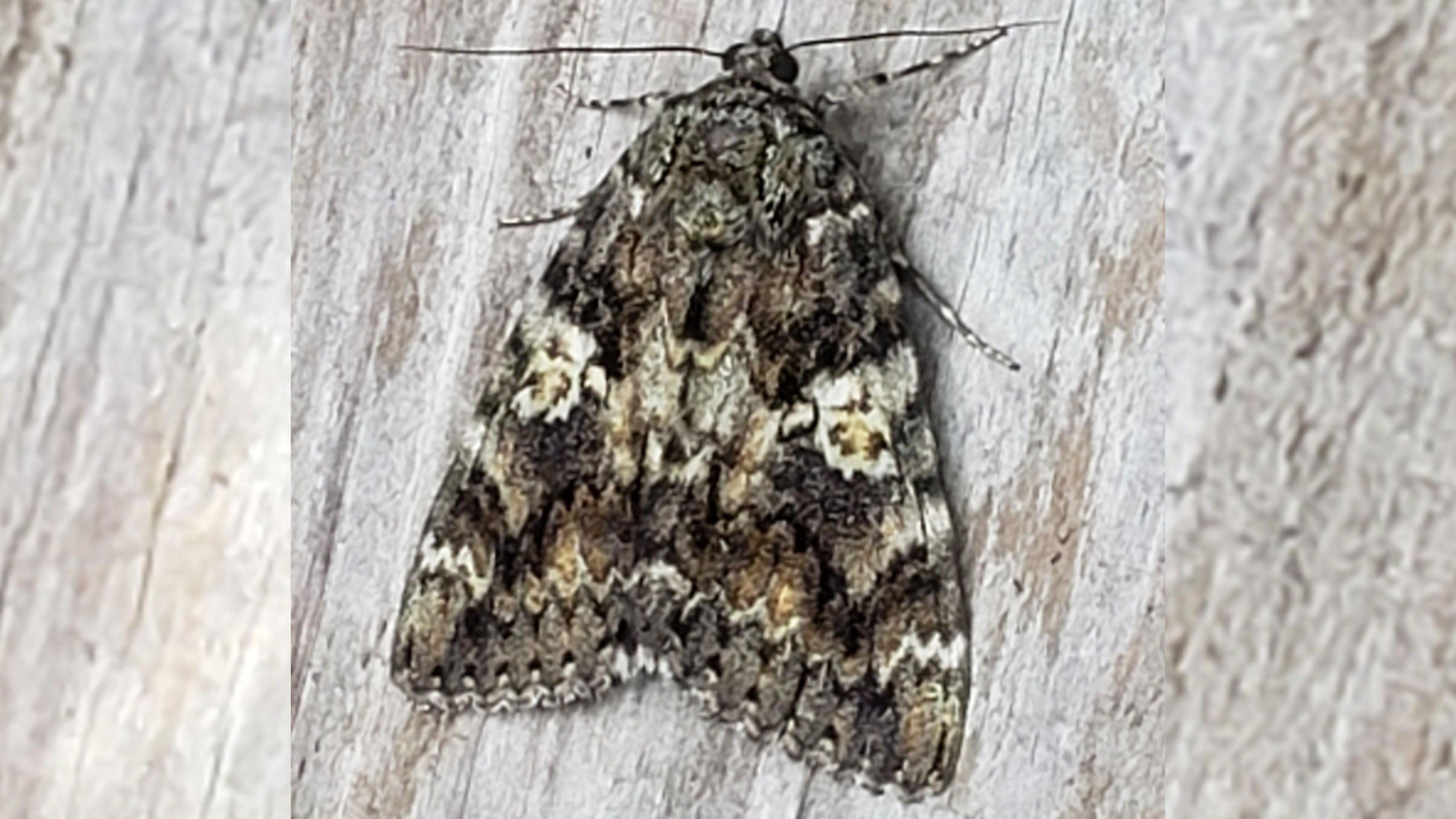
Buttery Conservation says, in Britain, the moth is usually restricted to the New Forest
Butterfly Conservation, external, which also deals with moths, says, in Britain, the dark crimson underwing, is usually restricted to the New Forest in Hampshire.
Eggs are laid "on oak in August" before hatching in April.
Mr Greig said the moth spotted in Cambridge was probably a "migrant", but conservationists would not be certain that a colony had not been established until next summer.
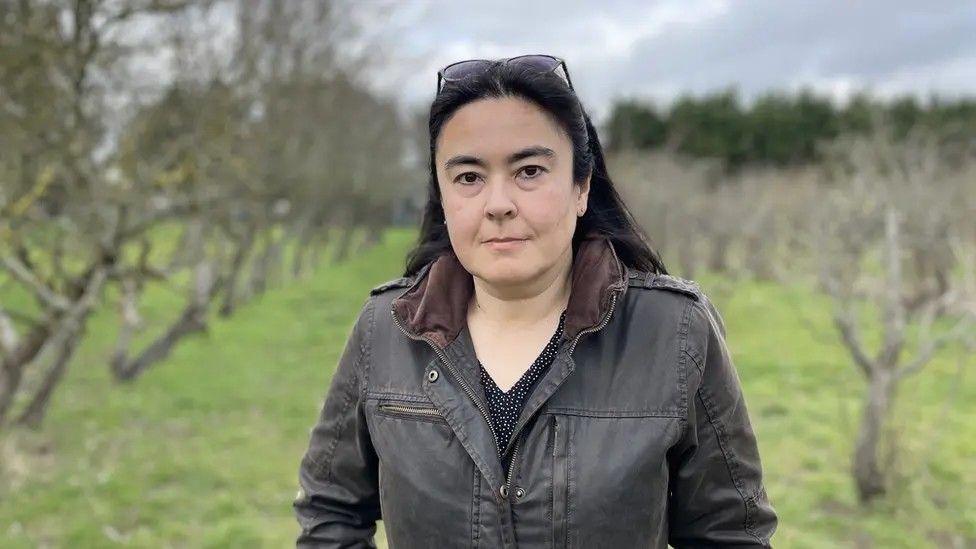
Orchard owner Anna Gazeley says "these places" have to be protected
Anna Gazeley, who owns the orchard, added: "Species like that are looking for any hospitable fragment they can get a foothold on."
She said the busway would run through the middle of the orchard, which was the biggest in Cambridgeshire and home to a dozen 100-year-old trees.
"What I do hope is people start to understand we have to protect these places," she said.
"Cambridgeshire had a really rich fruit history and that's all gone... orchard parks are housing estates; it's a fragment we can save."
Get in touch
Do you have a story suggestion for Cambridgeshire?
Follow Cambridgeshire news on BBC Sounds, Facebook, external, Instagram, external and X, external.
- Published17 August 2024
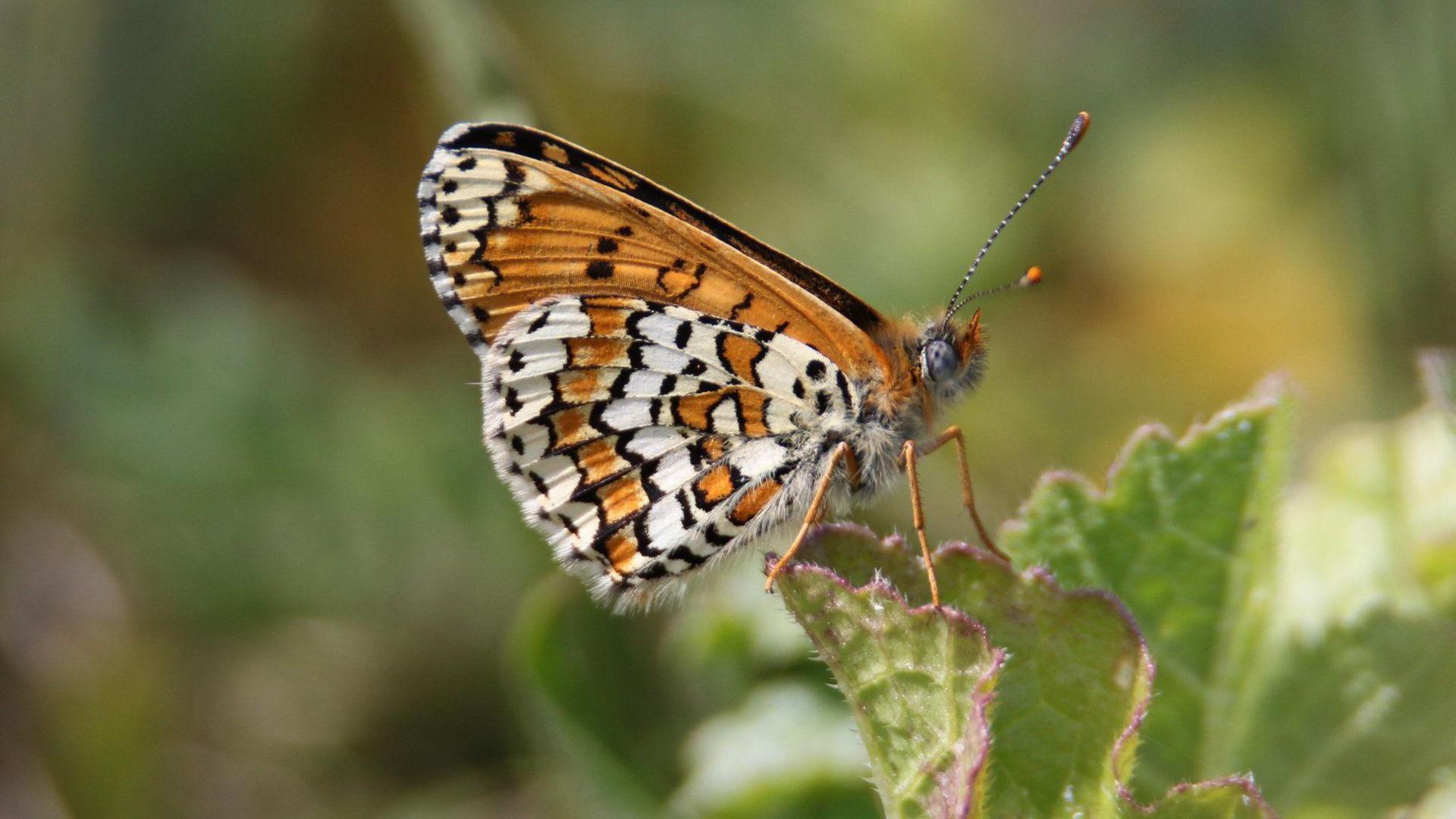
- Published30 July 2023
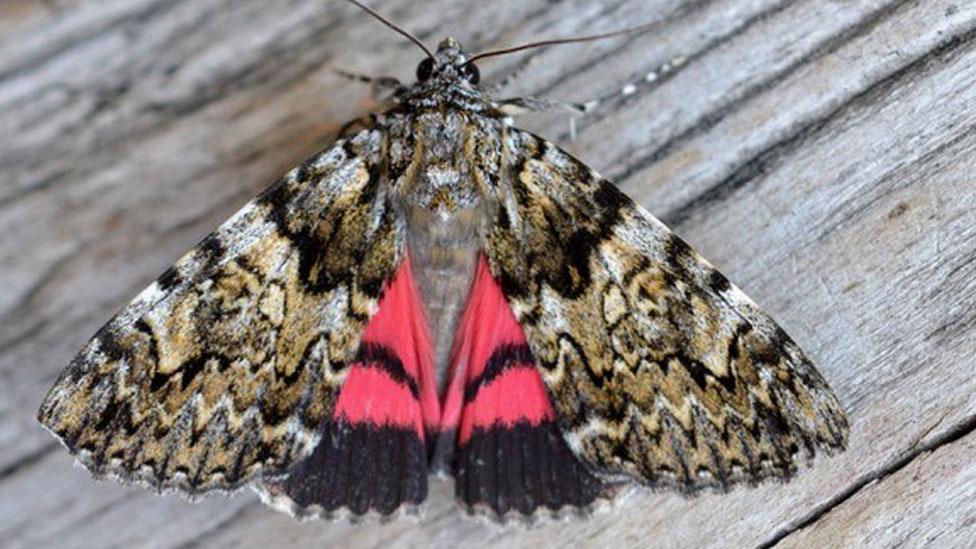
- Published21 March 2023
